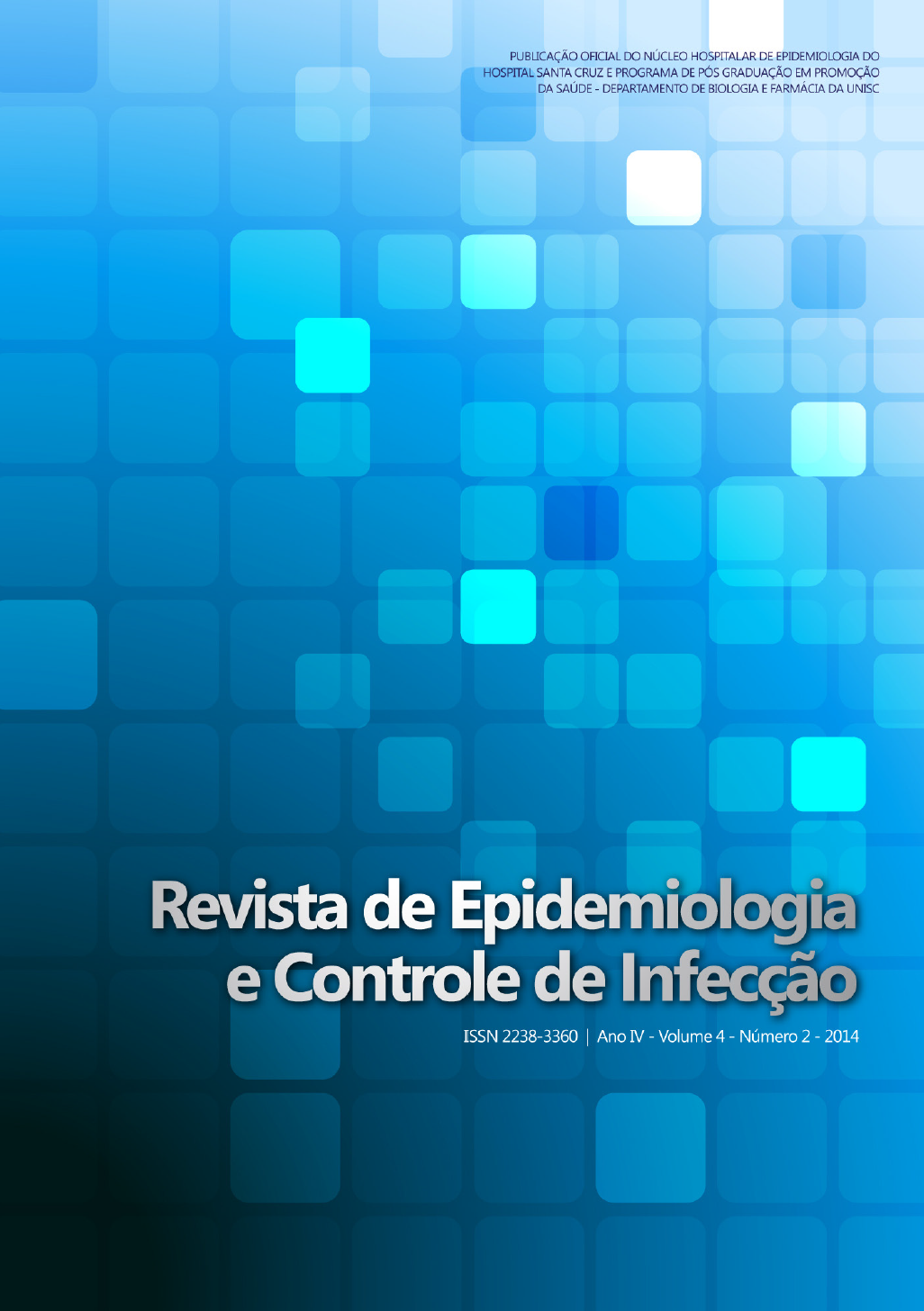Laboratory-confirmed bloodstrean infeccion in very low birth weigth neonates
DOI:
https://doi.org/10.17058/reci.v4i2.4192Abstract
Backgound and Objectives: Premature newborns are exposed to multiple risk factors for late-onset sepsis: the immaturity of defense systems, low birth weight and low gestational age, use of invasive devices. Purpose to assess the occurrence and etiology of late-onset sepsis (ICSLC) in premature infants with birth weight less than 1500 g (VLBW) admitted to the Neonatal Intensive Care Unit (NICU) of a philanthropic reference in Belo Horizonte – Minas Gerais. Methodology: Cross-sectional study. We evaluated data from epidemiological surveillance system (SACIH®) and tokens active search of Hospital Infection Control Committee (HICC) of the institution, for January 2010 to December 2012. Results: were recorded in 1850 Health Associated Infection (HAI), these 1481 were of bloodstream infection (BSI), representing 80% of HAIs. Of ICS, 559 (37.7%) were early-onset and 922 (62.3%) late-onset. The density incidence of infections was 30.7 / 1.000patients-day. Were registered LCBI 256 patients, totaling 355 infections. Of these patients, 16 had LCBI more of a microbiological agent. 99 patients (38.6%) had more than one LCBI. Birth-weight average 985g and gestational age (GA) average of 28 weeks. Most frequent agents were Coagulase-Negative Staphylococcus 49.9% (n = 117), Klebsiella sp 17% (n = 60), Candida sp 12.4% (n = 44). The lethality rate associated with LCBI in VLBW was 6.8% (n = 23). Conclusion: Despite the technological advances in fetal medicine and increase the survival of VLBW infants, the late onset sepsis presents itself at high rates and high incidence, which represents a major cause of morbidity and mortality for these newborns. KEYWORDS: Sepsis. Premature. Newborn. Infection control.Downloads
Downloads
Published
How to Cite
Issue
Section
License
The author must state that the paper is original (has not been published previously), not infringing any copyright or other ownership right involving third parties. Once the paper is submitted, the Journal reserves the right to make normative changes, such as spelling and grammar, in order to maintain the language standard, but respecting the author’s style. The published papers become ownership of RECI, considering that all the opinions expressed by the authors are their responsibility. Because we are an open access journal, we allow free use of articles in educational and scientific applications provided the source is cited under the Creative Commons CC-BY license.


